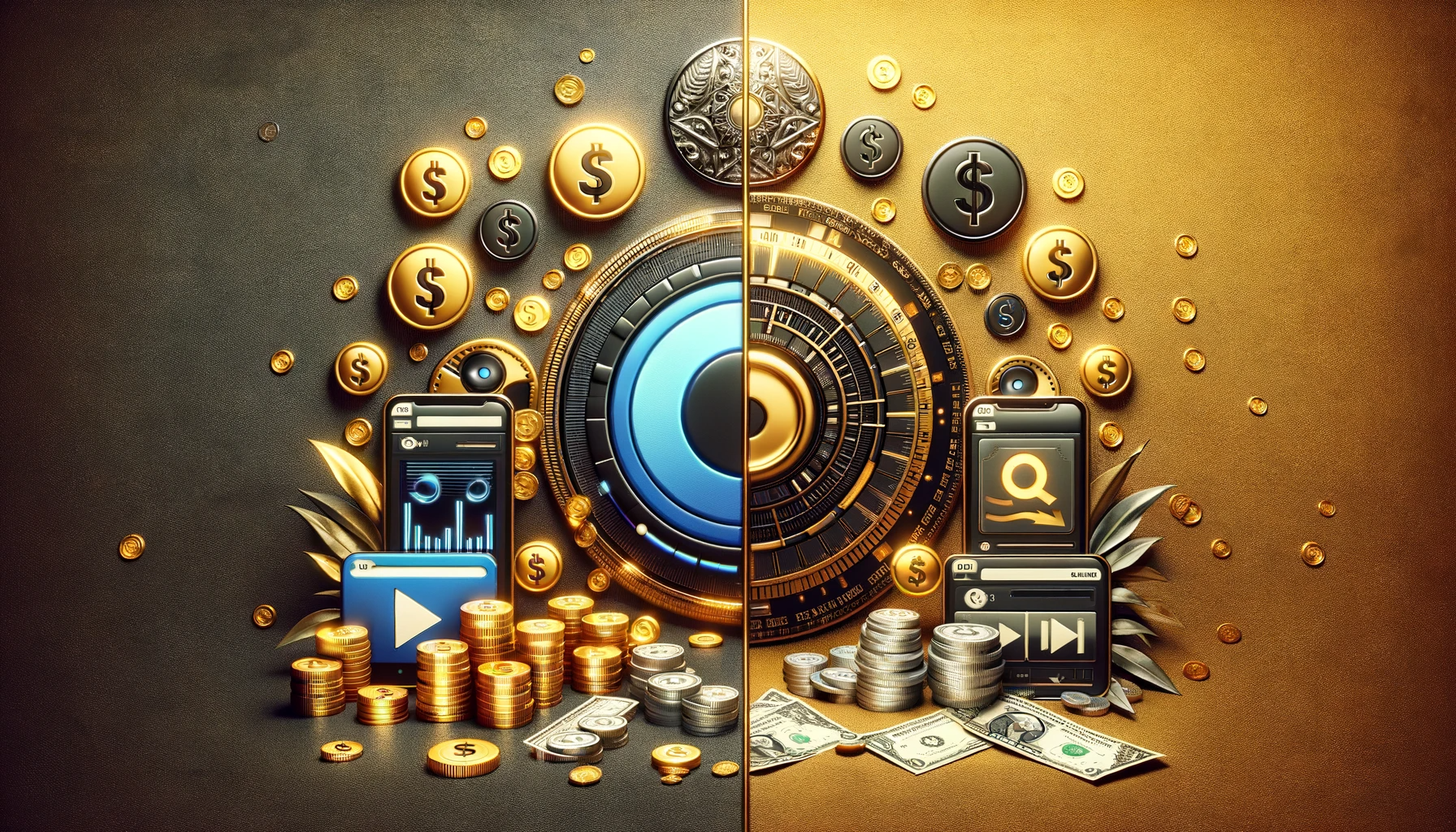Understanding the Concept of Digital Downloads and Streaming Services
What are Digital Downloads?
Digital downloads refer to the distribution of media content over the internet, allowing consumers to download and own a digital copy of music, film, software, books, or other types of content. When you purchase a digital download, you’re purchasing a license to make use of that content indefinitely. Whether it’s downloading your favorite album from iTunes or purchasing an eBook on Amazon, you’re essentially acquiring a digital product that you can access anytime and anywhere on your device.
The Fundamentals of Streaming Services
Streaming services function differently compared to digital downloads. These platforms provide the opportunity to access various types of media content such as music, films, series, and more on-demand, without necessarily owning them. It’s like renting content for a specific period of time, typically for as long as you subscribe to the service. Examples include Spotify for music or Netflix for video, where you have unlimited access to their libraries for a monthly fee, but don’t download anything to keep permanently.
Digital Downloads Versus Streaming: The Copyright Aspect
With digital downloads, the consumer pays a one-time fee to own a copy of the content. The royalties paid from each sale are split between the digital platform, record labels, publishers, and in the case of music, songwriters and performers.
In contrast, streaming services operate on a ‘micro-payment’ model. Each time a song is streamed or video is watched, a small royalty is paid. The exact amount varies depending on the platform and the number of total streams, but typically it’s fractions of a cent. These royalties are then distributed amongst the rights holders, similar to the digital download model. However, due to the sheer volume of content consumed via streaming, these small payments can accumulate significantly.
How Royalties Generation Varies for Digital Downloads
Understanding Royalties for Digital Downloads
The generation of royalties in the context of digital downloads can be somewhat complex, but understanding it is crucial for anyone involved in the creation or distribution of digital media. Unlike the streaming model, which predominantly uses a revenue sharing approach, royalties for digital downloads are primarily based on a per-unit model. This means each download of a song, movie, book, game, or other piece of content typically generates a fixed amount of royalties for the copyright holder.

The Impact of Digital Platforms on Royalties
Different digital platforms have varied policies when it comes to the percentage of royalties they offer to copyright holders. For example, royalty rates for music downloads on iTunes usually range between 60% and 70% of the retail price. Conversely, Amazon’s MP3 store generally offers a slightly lower royalty rate. It’s important for content creators and rights holders to understand these platform-specific differences in order to strategically distribute their content and maximize their earnings.
Pricing and Its Effect on Digital Download Royalties
Another crucial factor influencing royalties for digital downloads is the pricing of the product. In many cases, the royalty is a percentage of the retail price of the product. Therefore, higher-priced items typically yield higher royalties. However, price sensitivity amongst consumers should also be taken into account.
If a product is priced too high, the volume of downloads may decrease, thereby negatively affecting the overall royalties generated. Balancing these factors is a key challenge in the digital download marketplace.
The Mechanism of Royalty Calculation in Streaming Platforms
Understanding the Factors Impacting Royalty Calculations in Streaming
In the realm of streaming platforms, royalty calculation is a complex process that involves several key factors. The key determinant is the agreement between the platform and the rights holders, usually record labels or independent artists, whereby a specific rate per stream is established. This rate starkly varies from platform to platform and contract to contract.
Additionally, the location and the number of subscribers also have an impactful role in determining royalties. For example, streams from paying subscribers typically yield higher royalties than those from free users. Similarly, streams coming from countries with high subscriber rates often fetch better royalty earnings due to the larger revenue pool.

The Formula Behind Streaming Royalty Calculation
Streaming platforms typically use a pro-rata model, which means ‘in proportion’, to calculate royalties. In this model, a platform aggregates all the revenue it earned (from both subscription fees and ads) in a certain period and then determines what percentage each artist or rights holder contributed in terms of streams.
To illustrate, assume a platform earned $10 million in a month and Artist A’s tracks were streamed 1 million times out of a total 100 million streams. Here, Artist A contributed 1% of the total streams and thus earns 1% of the total revenue, i.e., $100,000.
Challenges and Critiques of the Current Mechanism
While the pro-rata model is widely used, it has attracted some criticism. Critics argue that this model benefits popular artists at the expense of smaller ones; a hit song with millions of streams will yield much more in royalties, even if thousands of fans regularly stream a less popular artist.
There’s also the issue of transparency. Many stakeholders, particularly independent artists and smaller labels, have raised concerns about a lack of clarity in how exactly streaming platforms calculate and distribute royalties. This has led to calls for more transparent and equitable systems, like the user-centric model that proposes royalties should be distributed based on individual listeners’ behavior rather than total streams.
Comparative Analysis of Royalties from Downloads and Streaming
Understanding Earnings: Downloads vs. Streaming
In order to truly examine the economic differences between downloads and streaming, it’s important to first understand how income is derived from these two methods. When an artist sells a track for download, for instance on platforms like iTunes, they typically receive a set payout per sale. This is often a larger one-time payment and can vary depending on the pricing structure of the specific platform.
On the contrary, streaming services such as Spotify or Apple Music pay artists every time their song is played. This makes the earning potential theoretically limitless, although the actual payout per stream is considerably less than the one-off payment for a download. Furthermore, the exact amount can vary widely across different platforms, making it challenging to estimate typical earnings.
The Mathematics of Streaming Royalties
Streaming platforms generally calculate royalties using a combination of factors, including the total number of streams, the artist’s royalty rate, and the platform’s individual rate-per-stream. For example, Spotify reportedly pays between $0.003 and $0.005 per stream, meaning that an artist would need hundreds of thousands, if not millions, of plays to generate significant income.
The situation is further complicated by premium and ad-supported streams. Premium user streams generally result in higher payouts than those from ad-supported users, which can affect artists’ revenues significantly depending on their listener base.
Download Royalties: A Fixed Price Model?
In contrast, the financial model for downloads is slightly more straightforward. Digital stores typically take a cut of each sale, usually around 30%, and the remainder goes to the artist or record label. This means artists can secure a greater upfront payment for their work when compared to the pay-per-stream model predominant in streaming.
However, this model comes with its own caveats. Although the revenue per sale is higher, the volume of sales is often significantly less than the number of streams an artist might accrue. Therefore, whether an artist earns more from downloads or streaming will depend largely on their popularity and the habits of their listener base.
Implications on Artists and Stakeholders Across Both Platforms
Artist Royalties: Digital Downloads vs. Streaming
The distinction between digital downloads and streaming can dramatically affect how artists and stakeholders earn from their music. For digital downloads, the model is straightforward: Once a consumer purchases a song or album, the artist and other stakeholders receive a certain amount of royalty. This one-time payment is usually higher than the payout they receive per stream.
As digital sales decrease and streaming comes into prominence, it is important to note that the returns for each stream are significantly lower than those for each sale. This means artists need to amass a substantially higher number of streams to match the earnings from a single digital download.
Impact on the Stakeholders
Music labels, publishers, producers, and artists form a complex network of stakeholders affected by this shift towards streaming. Music labels, for instance, have had to renegotiate contracts with streaming platforms to ensure fair compensation. In many cases, these negotiations have led to controversy and disagreement, as they bring to light pressing issues about fair pay in the music industry.
Publishers and producers also face the challenge of adapting to the streaming economy. Smaller independent labels and artists, who typically relied more on digital sales, are particularly vulnerable as they might lack the broad audience required to generate substantial streaming revenue.
Changes in Artist Strategies
In response to these changes, many artists have had to alter their strategies. Some artists release their music exclusively on select platforms or withhold their work from certain streaming services to negotiate better deals. Other musicians focus on live performances and merchandise for additional income, given the apparent limitations of the streaming pay-per-view model.
Indeed, while the shift towards streaming has brought music to more people, it has also intensified debates on equitable remuneration. As such, the implications for artists and stakeholders across both platforms remain a topic of ongoing discussion within the industry.




